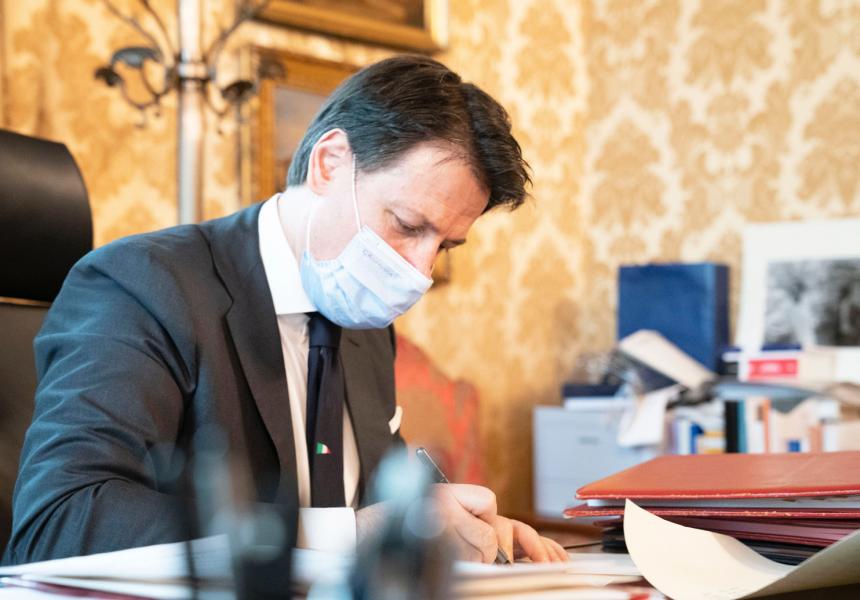Because Conte’s Recovery Plan risks being rejected by Brussels

The second version of the Recovery Plan is a political document without economic analysis, with contradictory objectives and which does not correspond to what the Commission is asking. The analysis by Tommaso Monacelli, professor of Economics at the Bocconi University of Milan, taken from Lavoce.info
Reading the new version of the Recovery Plan (or Pnnr) leaves the impression of a purely political document, aimed at safeguarding (perhaps) short-term equilibriums, but far from the format that, in principle, the European Commission will demand from the various member countries.
Today the document is a detailed declamation of generic objectives on which no one could disagree: green economy, environmental sustainability, gender equality, digitization, social cohesion, public administration reform, research enhancement. Each generic objective is accompanied by an allocation of resources. For example: tot billions to achieve gender equality, or social cohesion and environmental sustainability. But the plan is completely lacking in tools. For given resources, there are obviously multiple tools to achieve each of the objectives. For example, to foster gender equality building more kindergartens is different from promoting interventions in high schools that counter the prejudice against girls in the STEM subjects (science, technology, engineering, mathematics). The selection of alternative instruments to achieve the same goal is by no means neutral.
Three aspects are more striking than others in the structure of the Plan.
The first is the style. Lots of politics and very little (or zero) economic analysis. Completely absent even a minimal reference to the scientific literature capable of critically justifying each of the interventions.
Second, the document shows no awareness of the fact that some objectives may contradict each other. For example, it is certainly desirable to indicate the goal (via a strengthening of the so-called "Industry 4.0") of greater digitalization and automation of production processes. But this could easily conflict with achieving (for example) more female employment. The Plan totally lacks an economic analysis of the coherence of the various objectives with each other within the framework of general equilibrium. The underlying message that seems to emerge is instead the following: since the resources available are potentially very huge, then all these objectives can be achieved together. From the digitization of the public administration, through the green economy to the "national plan for cycle paths". As if the economy, as a whole, were not an interdependent system. A message that therefore seems to forget that the Recovery Plan, according to the vision of the EU Commission, will have strong conditionalities in the disbursement of funds, precisely according to the ability to achieve certain objectives.
Third, in its own system the document does not seem to correspond to what is technically required by the Commission, because it does not provide indications on the tools with which to achieve the objectives, as mentioned above. For example, according to the Commission's requests, it is certainly not enough to indicate the objective of allocating a total of billions to achieve so-called gender equality. We need to translate these objectives into well-defined "targets". For example, how many nurseries? Where is it? Using how many billions? With what time limit? And not only. The Commission's Recovery and Resilience Facility requires that the economic objectives to be achieved with this plan are also indicated. For example: building x thousand new kindergartens with the aim of increasing female employment by x per cent by 2026. Having to bear in mind that at the appropriate time, if these objectives are not achieved, the Commission will not proceed to disbursement of funds.
To give another example, the Recovery Plan contains a so-called “National plan for villages for the redevelopment of identifying places, suburbs, parks and historic gardens”. Beyond the deserving intentions of these objectives (who is not in favor of redeveloping the suburbs and our small historic centers?), The text is completely silent on how the same objectives should be achieved. Restoration of monuments? Social centers for young people? Above all, the Plan does not specify how to quantify the economic return of the objectives, most likely because doing so is extremely complicated and arbitrary. But in doing so, one forgets once again that every project must necessarily be accompanied by quantifiable economic objectives. Greater youth employment? Creation of new businesses? Without a precise specification of the expected economic return, which allows for a verification in progress, the resources of the Recovery Plan will not be disbursed and the objectives of social inclusion and territorial cohesion will unfortunately remain a dead letter.
The Recovery Plan is the most important economic policy plan of the last thirty years. The feeling is that it will be heavily revised at the instigation of the Commission. It is true that there is time until April 2021. But once the Plan has been approved, its implementation will be full of conditionalities, under which the country risks being crushed in a few years. A huge responsibility towards Europe for the country which is the maximum beneficiary of the entire Next Generation EU plan.
This is a machine translation from Italian language of a post published on Start Magazine at the URL https://www.startmag.it/economia/perche-il-recovery-plan-di-conte-rischia-di-essere-bocciato-da-bruxelles/ on Sun, 17 Jan 2021 06:32:28 +0000.
